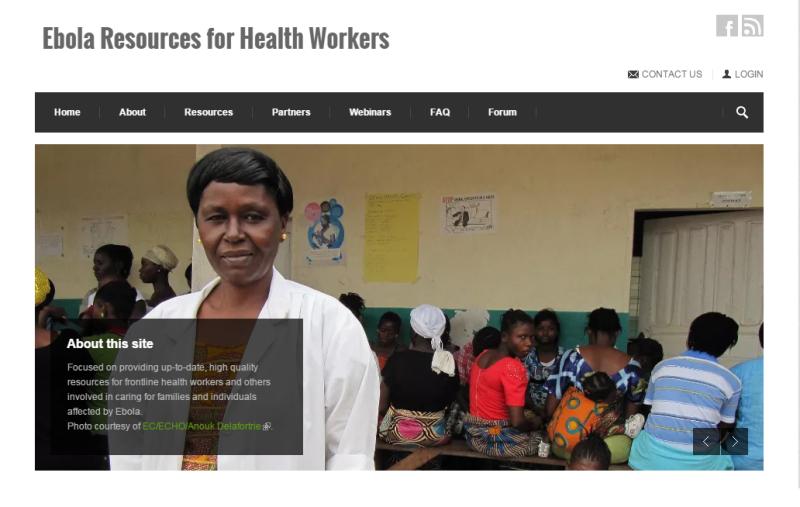Where We Work
See our interactive map


A couple of months ago, Dykki Settle walked into my office.
He had been talking with colleagues at mPowering Frontline Health Workers about marshaling a response to the Ebola outbreaks in West Africa—perhaps creating webinars and an online information resource for health workers.
Now, I played a minor role in the online training response to the anthrax attacks in 2001. I could sense that the job was larger than anyone else understood at that moment.
But of course I smiled and said, “Sure, I’m happy to help.”
The next weeks were a blur as we identified topics, zeroed in on speakers, contacted potential webinar participants, developed the online resource website, began populating the webpages with content, and figured out how to sustain all the above.
One of the biggest gaps in outbreak response: information and technology that are adaptable and usable right away.
Colleagues from across IntraHealth and mPowering Frontline Health Workers were part of my every day as we emailed (there were hundreds) and made Skype calls (there were dozens) with others all over the world to organize the events.
Everyone wanted to help. That was one of the challenges.
But we all know—and some of us have seen firsthand—how the Ebola crisis is affecting some of the most vulnerable areas of the world. We also know that frontline health workers are struggling to keep pace with the outbreak.
Those health workers need clear, simple, reliable information on how to protect themselves, detect the disease, and respond to their communities’ needs.Knowing these things fueled the tremendous energy we’ve all brought to the new resource center—called Ebola Resources for Health Workers—and the accompanying webinars.
We ran two parallel tracks. One was to develop the webinars from a standing start. We had great technical support from TechChange.org to host the webinars and provide streaming archived versions later.
The other was to create an online resource center from nothing in a couple of weeks.
The idea was to use the webinars to highlight issues that frontline health workers face in Ebola-affected countries and provide information, resources, links, and other material in the resource center to respond to those needs. It’s a call-and-response pattern we hope will drive visitors and resource contributors to the center.
Our approach is to invent nothing and adapt everything.
The webinars address one of the most important gaps in responding to the outbreaks: information and technical resources that are adaptable and usable right away. Our approach is to invent nothing and adapt everything.
One great example is mHero. It brings together existing information systems from IntraHealth, UNICEF, and HISP to help deliver training messages to health workers’ mobile phones in Liberia.
Another is GOAL’s Stay Safe at Work program, which helped train provincial police in Sierra Leone to respond effectively and safely to the Ebola outbreak.
During the live webinars, over a score of presenters offered insights and resources to more than 691 people from 38 countries. Many more are watching the archived versions.
Today, Ebola Resources for Health Workers provides an online gathering place for information, expertise, and technologies to assist health workers in the response. You’ll find these and more at Ebola Resources for Health Workers:
Resources are available in English, French, Malinke, and Portuguese, so far.The webinars and the Ebola Resources for Health Workers are a community. Stop by, confer, and participate. Together, we can help frontline health workers manage—and survive—the outbreak. Special thanks to Lesley-Anne Long and Carolyn Moore of mPowering Frontline Health Workers, Paul Cardullo and John Liebhardt of IntraHealth, and many more for their time and energy in making these resources a reality.
Get the latest updates from the blog and eNews




